Category: FAIRS
FAIRS
November 3, 2011 — November 30, 2011
“He was not to do anything of bad taste, the women of the inn warned old Eguchi. He was not to put his finger into the mouth of the sleeping girl, or try anything of that sort” – ‘House of the Sleeping Beauties’ by Yasunari Kawabata.
Daniel Blau, London/Munich, in collaboration with Galerie Meyer, Paris, is pleased to present an exhibition of Nobuyoshi Araki polaroids.This exhibition will take place in the cultural quarter of Saint-Germain-des-Prés, to coincide with the photography festival in November.The quarter is infamous for the French home of existentialist literature – the creative birthplace of prominent writers including Jean-Paul Satre and Simone de Beauvoir.With this in mind, and in ode to the relationship between photography and literature, we have decided to engage directly with literary themes, by presenting to you a series of frozen narrative moments in photography: Araki’s polaroids.
In the introduction toYasunari Kawabata’s House of the Sleeping Beauties,Yukio Mishima compares Kawabata’s writing to a photograph. He says, like a still image, Kawabata’s writing might expose the light-world in which we live, revealing its bright, plastic hypocrisy. Literature is compared to the photographic image; both freezing moments in narrative time. Like Kawabata, Araki developed a profound frustration for the conservativism of Japanese society’s attitude to sex, and like Kawabata’s House of the Sleeping Beauties, Araki’s photographs seek to radicalise and re-invent the way we view nudity and sexual implicitness in Japanese culture, alongside the boom of the sex industry in Japan in the 1970s, 80s and 90s.
With true beauty and precision, it is Araki who brings this idea to life in the image; his series of polaroids conjuring a Kawabata-like story; where nude women become the beautiful protagonists in the perfect eroto-pornographic tale.
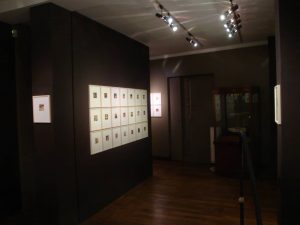
November 10, 2011 — November 13, 2011
Daniel Blau is pleased to present a unique collection of rare vintage NASA photographs. These incredible pictures depict the wonder and awe of space travel.
These photographs have become part of our collective visual memory for the twentieth century; pictures that markedly symbolise the speed and power of post-war technological development at a time when Cold War tension was rife between the US and Russia. And so began the space race; the period of the 1960’s that saw the first man on the Moon. Missile technology, taken from Germany at the close of WWII, set the technological precedence for manned space crafts to orbit the Earth, eventually landing on lunar soil: a period in human history incomparable to any other; photographed, with immense beauty, for the whole world to gaze in astound.
These are not simple snap-shots by an amateur, taken with a Kodak box, but the result of the combined efforts of thousands of workers and scientists at NASA. Indeed, these are the most expensive photographs ever produced. To see these prints in the flesh is an experience as close to bouncing on lunar soil as any of us will ever get. These magnificent landscapes can be compared to Gustav Le Gray’s large prints of Fontainebleau or his seascapes. Today we treasure these vintage prints for their artistic quality and as permanent visual evidence of a time when the future seemed so close…
‘…Our first shock comes as we stop our spinning motion and swing ourselves around so as to bring the Moon into view. We have not been able to see the Moon for nearly a day now, and the change is electrifying. The Moon I have known all my life, that two-dimensional small yellow disk in the sky, has gone away somewhere, to be replaced by the most awesome sphere I have ever seen. To begin with, it is huge, completely filling our window. Second, it is three-dimensional. The belly of it bulges out toward us in such a pronounced fashion that I almost feel I can reach to touch it…’
– Michael Collins, Apollo XI, July 1969 (NASA Sp-350, 1975, p. 207)
Paris Photo, 10 – 13 Nov 2011
Grand Palais, Avenue Winston Churchill, 75008 Paris
A newspaper catalogue will accompany the exhibition.
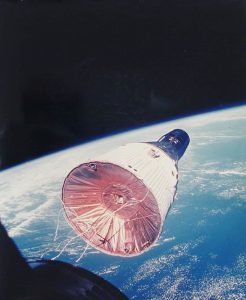
September 15, 2011 — September 18, 2011
186.283 mps
An exhibition of rare NASA photographs 1965 –1981.
Two great achievements in science have given us some of the most striking and memorable photographic images of the 20th century. The iconic pictures of the rising mushroom cloud were a visual testimony to the success of atomic tests. Space exploration gave us unforget-table views of Earth and Moon as seen from space (Apollo 8), as well as “Buzz” Aldrin’s footprint in Lunar soil. These pictures have become part of our visual memory. They are not simple snap-shots by an amateur, taken with a Kodak Box, but the result of the combined efforts of tens-of-thousands of workers and scientists.Some of these astronomically costly missions, Luna 3 for example, produced very few useful photographs, making each print absurdly expensive and ultimatly precious. These grainy pictures of the Moon from afar are strangely remeniscent of the Shroud of Turin and induce the same sense of wonder. Other missions resulted in an endless stream of photographs both in color and black and white, in negative and positive (Apollo XI). From 1945 through the early 1960’s the USA “flooded” the world’s press agencies with thousands of images of atomic tests. They were photographed in every possible way, keeping the audience continuously in awe; from the ground, from the air, under water, through a periscope, next to a zeppelin, at night, during the day or even “by invitation only.” As the Space Race became more of the public and media focus, photographs taken in space replaced the explosion pictures. Now it was the blast-off, the blue Earth, two space ships meeting in the void above Earth (Gemini), photos radioed back from rockets moments before impacting the Lunar surface (Ranger), pictures taken by radio controlled video cameras on the Moon, radioed back to Earth and reassembled here (Surveyor). One of the unmanned missions (Orbiter) asked for a complete dark room to be shot into space. It was a kind of photo-booth taking photos of the moon while orbiting it, developing the film, scanning the negative and radioing the data back to Earth. Here the signal was again transferred onto negative film from which the positive pictures were printed. The Orbiter probe eventually crashed on the Moon, thus destroying the original negatives. The successful landing of Apollo XI on the Moon changed all that; from July 1969 on we became used to focused and detailed photographs in colour. True, the pictures we received while the astronauts were still “out there” had the low quality of wire-prints. On the other hand, the Kodak films they brought back were crisp and “juicy” like tourist photos from Rome, the Grand Canyon or Palm Springs. The images of the atomic cloud, as well as those of the astronauts on the Moon were “tools” of propaganda for the American dream, demonstrating might and offering hope. In San Francisco at SF20/21, we are presenting a selection of significant vintage NASA photographs. Some of them are unique surviving examples of the Sisyphean task of assembling thousands of small photographs to fairly large mosaics of Moon-scapes (Surveyor). Others are important for their size or simply as rare survivors from a once important archive of prints that, within the last fifty years was dispersed, perhaps on account of digitisation or because it became technologically antiquated. Today we treasure these vintage prints for their artistic quality and as permanent visual evidence of a time when the future seemed so close.
Opening: September 15
Exhibition: September 16 –18, 2011
Festival Pavilion at Fort Mason Center San Francisco, CA 94123
Telephone at the booth: +49 / 172 / 74 84 999
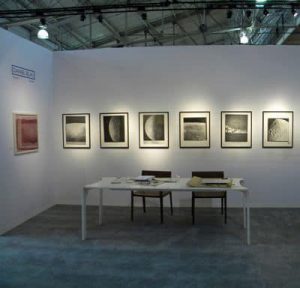
June 15, 2011 — June 19, 2011
Galerie Daniel Blau is pleased to be exhibiting at Art Basel 2011, 15 – 19 June, 2011. www.artbasel.com
Art Basel takes place in Halls 1 and 2 of Messe Basel, Messeplatz, 4005 Basel, Switzerland. You can view our stand on the ground floor, booth D8.
–
We will be exhibiting works by:
Georg Baselitz
Glen Baxter
Chris Bianchi
Bill Bragg
Jake and Dinos Chapman
Leigh Fox
Neal Fox
Lucian Freud
Adam Fuss
Anselm Kiefer
Rachel Kneebone
Matt Mullican
Stephanie von Reiswitz
Robert Rubbish
Andy Warhol

March 17, 2011 — March 27, 2011
TEFAF 2011. www.tefaf.com
MECC, Forum 100, 6229 GV Maastricht, The Netherlands
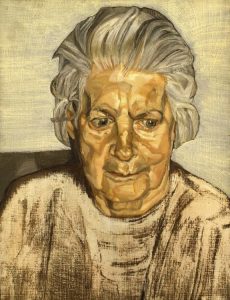
November 17, 2010 — November 21, 2010
As a parallel exhibition to Hippolyte Bayard, Photography and the Spirit in Paris, we will show unusual and rare portraits from the 1850’s by artists such as Roger Fenton, Charles Marville and Charles Nègre at Paris Photo.
–
PARIS PHOTO 2010 | www.parisphoto.com
Venue: Carrousel du Louvre, 99 rue de Rivoli, 75001 Paris, France

November 16, 2010 — November 27, 2010
In the gallery exhibition at Galerie Meyer, Daniel Blau Photography will be showing a marvellous collection of recently discovered prints: A Bayard direct positive from 1839 will be on view, as well as some of the earliest known salt prints from glass negatives (1849).
–
GALERIE MEYER – OCEANIC ART
Venue: 17 rue des Beaux-Arts, 75006 Paris, France
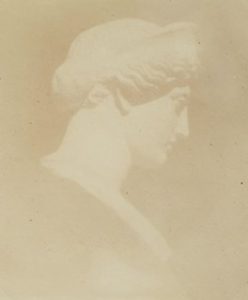
November 14, 2007 – November 18, 2007
Galerie Daniel Blau is proud to announce the exhibition “Autochromes — The Rise of Colour Photography” at Galerie Meyer, Rue des Beaux Arts, Paris.
100 years have now passed since the first commercially applicable method of colour photography was introduced. The method of colouring potato starch and making it light sensitive was publicized by the Lumière brothers in 1907 under the name “Autochrome”. Fixed on a glass-plate, this process resulted in the first coloured photographs one century ago. The variable grain in Autochromes is still of central importance to today’s photography — digital photography, colour printing and silk screens are based on it.
Even in their early stages, Autochromes were compared to the paintings of the pointilists and one can not help but be reminded of works of impressionism when taking in the strength of the colours and the painting-like depth of these impressions on glass.
This important collection, assembled over many years from dealers and fellow collectors worldwide, is now on view to the public for the first time. Using especially designed presentation frames, Daniel Blau will be exhibiting his significant collection of Autochromes, dating from 1895 to 1920, in the exhibition rooms of Galerie Meyer. Among other photographers, the images of such famous artists as Lumière, Gimpel and Knott will be shown. Atmospheric scenes of Parisian alleys hang by lively squares; large parks by lonely ruins; rugged cliffs can be viewed alongside calm ocean bays, while the intimate effect of the intense colours draws the viewer in.
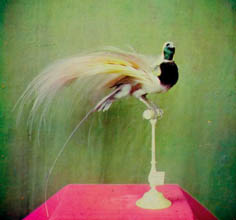





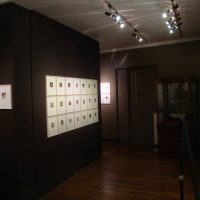

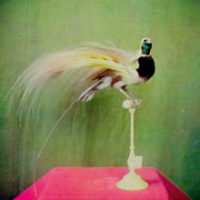
 +49 89 29 73 42
+49 89 29 73 42